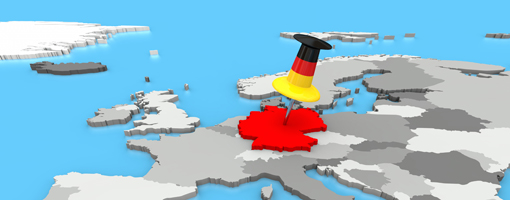Four Dutch pension funds reported improved funding positions following the second quarter (Q2) of 2025, with PME experiencing a 3.7 percentage point (pp) increase in its current funding ratio over the quarter, followed by PMT (3.6pp), bpfBOUW (3.5pp) and ABP (1.9pp).
PMT, for workers in the metal and engineering industries, ended the quarter with a funding ratio of 114.8 per cent, up from 111.2 per cent, due to increased interest rates and a positive return on its investment portfolio.
PMT chairman, Mieke van Veldhuizen, said: “Stock markets are showing a calmer picture again at this end of Q2, after much turmoil in Q1 2025. We closely monitor the impact of international developments, but as a pension fund, we invest for the long term. To reduce risks, we spread our investments across different countries, sectors and asset classes.”
Over Q2, the pension fund’s total assets increased from €84.9bn to €86.3bn while liabilities decreased in value from €76.4bn to €75.1bn.
Meanwhile, the scheme for the construction industry, bpfBOUW, has the best funding position out of the four schemes, as it rose to 133.3 per cent, up from 129.7 per cent over the quarter.
Its policy funding ratio, the average of its current funding ratio over the past 12 months, also increased by 0.4pp to 127.4 per cent.
Commenting on the economic and geopolitical environment, the fund said that the import tariffs announced by US President Trump in early April caused a lot of turmoil in the financial markets in the first weeks of Q2.
At the same time as the US stock market fell, the US dollar and US government bonds depreciated, something that does not often happen all at once. However, once President Trump postponed most tariffs, calm returned to the financial markets, and there was a strong recovery. This led to the BpfBOUW achieving a 1 per cent return on its investments in Q2.
Overall, in Q2, the pension fund’s assets grew by €0.5bn to €66.6bn. The total value of pension liabilities decreased by 1.9 per cent. However, interest rates rose to 2.72 per cent, having a positive impact on the funding ratio.
It was also a positive quarter for PME, another fund for workers in the metal industry, as its funding ratio rose from 116.4 per cent at the end of March to 120.1 per cent at the end of June, due to a slight increase in interest rates.
Commenting, PME executive board chairman, Eric Uijen, said: "The slightly increased interest rate caused a small negative return on our matching portfolio in the second quarter. But because those rising interest rates meant we had to set aside less money for current and future pensions, as well as positive returns on our return portfolio, our financial health improved again.
“All in all, our funding ratio rose by more than 7 percentage points in the first six months. This is good news for our members and pensioners. Because a healthy financial position at the end of the year, makes it possible to increase pensions and it facilitates a smooth transition to the new pension scheme on 1 January 2027.”
However, he warned of the “turbulent world” with increasing global conflicts and an unpredictable US trade policy, which are causing turmoil in the financial markets. He argued that in these situations, pension funds show their worth, with a long-term view, stable policies and collective risk sharing.
In terms of statistics, in Q2, PME’s invested assets increased by €1.7bn to €58.3bn, driven by the positive return on the return portfolio, which offset the negative return on the matching portfolio. The slightly higher interest rate (from 2.6 per cent to 2.7 per cent) also caused a decrease in pension liabilities in Q2, which, on balance, improved the financial position.
Finally, ABP, for workers in the public sector, achieved an investment return of 0.3 per cent in Q2, equivalent to €1.8bn. Its current coverage ratio rose from 115.6 per cent at the end of March 2025 to 117.5 per cent at the end of June 2025. However, during the quarter, its policy funding ratio fell slightly by -0.1 per cent from 113.8 per cent to 113.7 per cent.
ABP board chairman, Harmen van Wijnen, echoed his peers in regard to the current economic climate: “In Q2 of this year, the turmoil in the world and financial markets continued. It is therefore important for ABP to protect its pension assets. ABP's investment portfolio is built to deal with shocks. We invest spread across the world and different types of investments and with a long-term view.
“At the same time, interest rates have a lot of influence on the funding ratio. The fact that the funding ratio improved in Q2 was therefore partly caused by the slightly higher interest rate. ABP is also working hard to move to the updated pension scheme in 2027 so that we can continue to ensure the most valuable and stable pension for our participants in the future."
Latest News
-
17% of Danes sees their income halved when they retire, I&P Denmark finds
-
Steady UK DB funding levels cap off positive 2025 for schemes
-
Disability pension applications fall 8% at Ilmarinen amid 'notable shift' in requests
-
Netherlands ABP voted against anti-DEI proposals in 2025 AGM season
-
36% of Finnish retirees think older workers are seen as a burden, Elo survey
-
41% of young Dutch adults say saving is most important financial resolution
Podcast: Stepping up to the challenge

In the latest European Pensions podcast, Natalie Tuck talks to PensionsEurope chair, Jerry Moriarty, about his new role and the European pension policy agenda
Podcast: The benefits of private equity in pension fund portfolios

The outbreak of the Covid-19 pandemic, in which stock markets have seen increased volatility, combined with global low interest rates has led to alternative asset classes rising in popularity. Private equity is one of the top runners in this category, and for good reason.
In this podcast, Munich Private Equity Partners Managing Director, Christopher Bär, chats to European Pensions Editor, Natalie Tuck, about the benefits private equity investments can bring to pension fund portfolios and the best approach to take.
In this podcast, Munich Private Equity Partners Managing Director, Christopher Bär, chats to European Pensions Editor, Natalie Tuck, about the benefits private equity investments can bring to pension fund portfolios and the best approach to take.
Mitigating risk
BNP Paribas Asset Management’s head of pension solutions, Julien Halfon, discusses equity hedging with Laura Blows
© 2019 Perspective Publishing Privacy & Cookies






Recent Stories